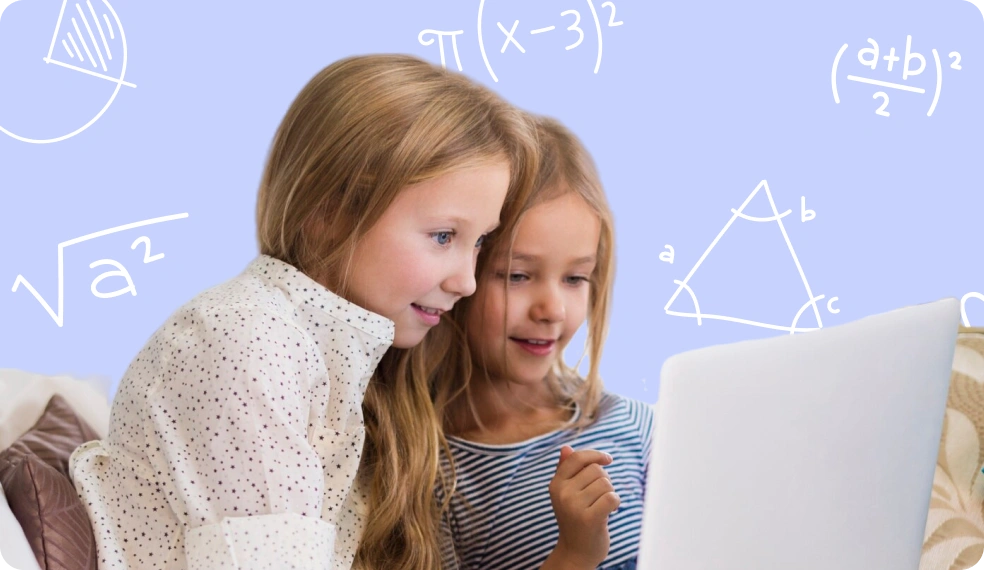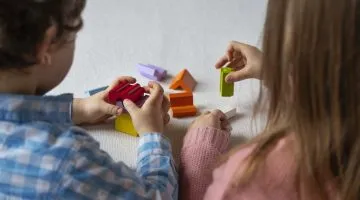How to Teach Multiplication: 6 Easiest Ways
reviewed by Jo-ann Caballes
Updated on October 14, 2024
So, your kid has mastered addition and subtraction, and it’s time to move to multiplication… The transition is one of the critical challenges that they will face during their studies. However, here’s the truth: your approach and methodology matter a lot.
Want to learn how to introduce multiplication into your kid’s studying? These are a few simple steps that have been proven helpful.
How Brighterly Tutors Teach Kids Multiplication
The core principle of Brighterly multiplication learning is to make the process as engaging as possible while showing how multiplication translates into the real world.
No one can deny that, most often, school studying isn’t enough to ensure your kid gets a good grasp of the topic. That’s where platforms like Brighterly come into play. They give children extra practice and constant support, guaranteeing the best results in the subject.

These are some of their commitments:
- Tailored 1:1 learning gives your kid 100% of the teacher’s attention without distraction. This format allows them to study in a friendly environment, revealing their full potential. That’s what a student-centered approach looks like in practice!
- Customized learning plans allow your child to learn how to multiply at the exact pace that suits them. A little remark here: before starting learning, your child will have to complete a test where they provide extra info about themselves, from their studying goals to average math grades. Then, they will be matched with the best-fitting tutor who continues examining their preferences and learning styles.
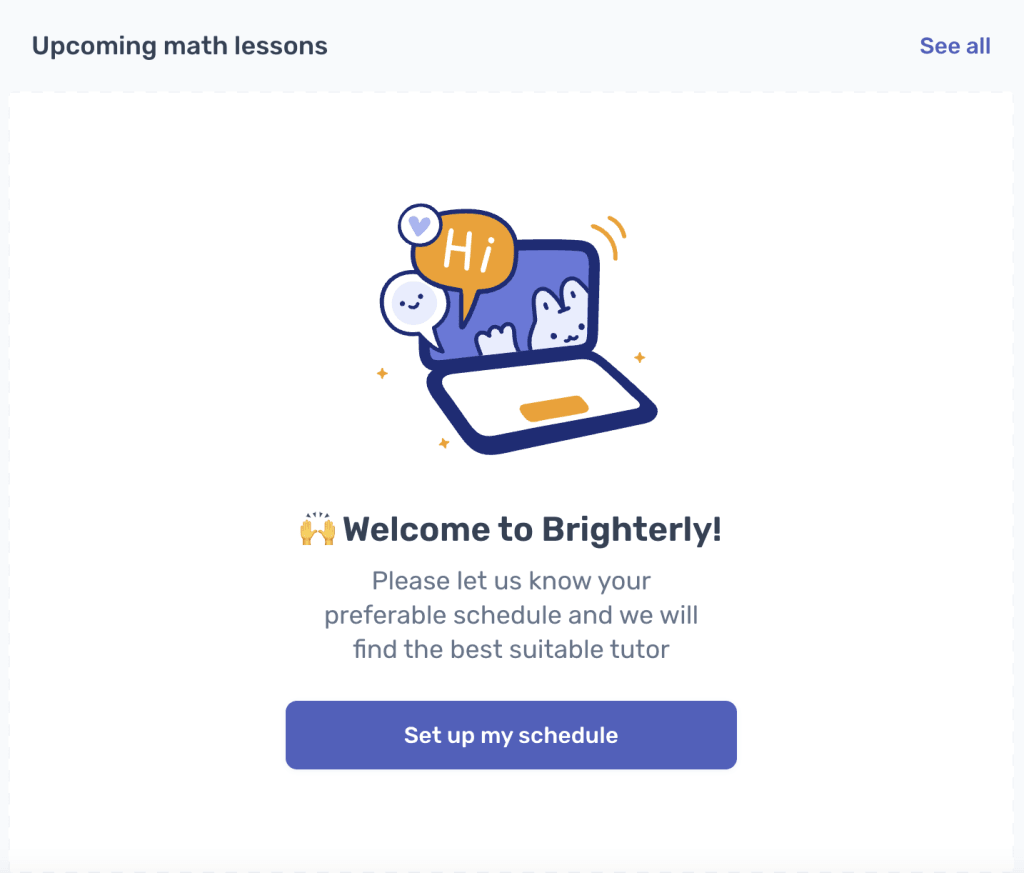
- The free demo lesson option allows you to test the waters. It’s just a perfect opportunity if you’re hesitating about whether Brighterly tutors do know how to explain multiplication to a kid.
How to Teach Multiplication: 6 Creative Steps
The six creative steps to help your kid learn multiplication are as follows:
- Start With Addition
- Teach With The Multiples Of Zero
- Teach Multiplying By One
- Move To Multiplication Tables
- Help Them Memorize the Multiplication Table
- Teach The Ease Of Commutative Properties
Start With Addition
Wondering how to explain multiplication to a child? The clue is — start with addition. Kids typically find multiplication confusing because they don’t understand the patterns. But if they learn to view multiplication as repeated addition, they are doomed to success.
Yes, this approach may fail when dealing with three-digit integers. Nonetheless, the tactic works perfectly with smaller numbers.
For example, to solve a problem like 4×2, kids can add 4 and 4 to get 8. If there is a two-digit number and a one-digit number, as 10×5, children may calculate 50 by adding 10+10+10+10+10. However, note that repetitive additions get more complex as the numbers increase.
Teach With The Multiples Of Zero
Zero is an intriguing and complicated concept in explaining multiplication. Look at this: your children may find 4+0 = 4 interesting, whereas 4×0 = 0 may confuse them.
An easy way to help kids understand the use of zero is through words and pictures. You may ask, “If I don’t give Brandon any pencils, how many will he have?” Clearly, “none” is the answer. That’s one way to begin teaching multiplication by zero.
Alternatively, show them this fun GIF to build a real-world connection. Just as said, multiplication by zero always equals zero, none.
Teach Multiplying By One
After studying multiplication, your kids know that anything multiplied should increase in value. However, things work differently with multiplying by one since anything multiplied by this number remains the same. After all, explaining multiplication to a child isn’t that difficult:
Ask them, “If I give Brian an orange once, how many oranges does he have?” One would be the correct answer. “But what if I give Brian eight oranges once?” How many will he have? The answer will be eight — the number won’t grow.
Move To Multiplication Tables

Many children fear this multiplication table — but it’s a huge mistake since it has proven very helpful. To simplify their studying, you may first start with tables 1 to 5.
Beginning with the most basic numbers may help youngsters learn this step more efficiently.
- First, ensure the kid has a hard copy of the multiplication table.
- Then, have them tackle the less complex sections using basic counting or repeated addition.
- Once they can deal with simple numbers, get down to more complex ones.
Help Them Memorize the Multiplication Table
There’s nothing bad in allowing kids to memorize the table. Instead, it’s a fool-proof method for teaching multiplication you should encourage. First, ask them to remember the easier numbers, such as the 1s, 2s, 5s, 10s, and 11s. Then, continue with the more challenging ones.
Teach Commutative Properties
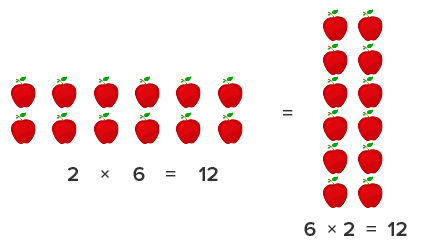
Commutative property means that the result remains the same even if one changes the order of numbers. For example, in a 2*4 equation, 2 may be put before 4 or 4 before 2. Anyway, both 2*4 and 4*2 will give the same result of 8.
Easy Ways to Teach Multiplication
These are some easy ways to teach kids multiplication:
- Play Math Games
- Use Math Websites
- Introduce Fun Math Books
- Break The Times Table Into Smaller Chunks
- Recite The Multiplication Table
Let’s break them down and explore in more detail.
Play Math Games
No one can doubt the power of gamification in math learning, so it’s not strange that it is also the easiest way to teach multiplication. Remember that there are two best options to help your kid learn some concept: make it fun and show its usefulness. Math games combine both! So, here are some engaging ideas your child will definitely adore.
Multiplication Model Make-Up
Children love engaging with hands-on materials. So, provide the child with small manipulatives, such as cubes, counters, beads, or even dried beans. Call out a multiplication fact and have them arrange their manipulatives to model it. For example, if you say 5 x 5, the kid will create five groups of five beans each. Once they’ve completed the task, ask them to announce the product.
Calculator Checker
Give the child a simple calculator. Call out two factors, such as “3 and 7.” They should input the two factors into the calculator by pressing the multiplication (x) button in between. Then, give them about 30 seconds to think about the answer. After that, ask for their guesses. Once they respond, instruct them to press the equals button to check their answer.
If they handle multiplication tasks like this one, you kill two birds with one stone:
- the kid improves multiplication skills,
- and learns to handle a calculator.
Multiplication Mix Up
Create a set of digit cards from 0 to 9 using index cards. Ensure there are at least three of each card. Have the kid shuffle their cards and spread them out on the desk. Call out a product, such as 12, and give them three minutes to find pairs of cards that multiply to that product.
Dot Multiplication Activity
Give the kid a piece of lined paper and a pencil. Instruct them to draw a specified number of dots, such as 12. Once they’ve completed this task, ask them to use a crayon or pencil to circle the dots in a way that illustrates a multiplication fact. For example, with 12, they could circle two groups of six, six groups of two, three groups of four, etc.
Then, they should practice multiplication facts by writing the corresponding ones underneath their drawings.
Use Math Websites
Many parents wonder: “What’s the easy way for my child to learn multiplication?” Remember about that Brighterly platform we discussed at the beginning? Well, if you’re looking for extra practice and want your kid to really excel in math — it’s just your perfect variant.
First, math websites like Brighterly are completely student-oriented, meaning they can study when and for how long they want. The study plan will be adjusted to your kid’s exact level, so no worries about that.
Second, they guarantee equally brilliant results for elementary and high school learners. Their compelling and adaptive STEM-focused curriculum is based on the Common Core mathematics program, so all the listed topics are covered effectively.
Finally, they will do their best to help your kid understand the concept of multiplication, not just memorize the theory. And that’s the core of successful studying, isn’t it?
But hey, there’s more. Brighterly and other similar websites commonly have even more helpful materials in store.
Brighterly Multiplication Practice Tests
No subject can be learned by rote theory memorization. So, obviously, the best way to teach multiplication is by practice. On the Brighterly platform, you will find:
- Solid, in-depth explanations along with detailed examples and practical tasks:
- Various handy tests grouped according to their complexity.
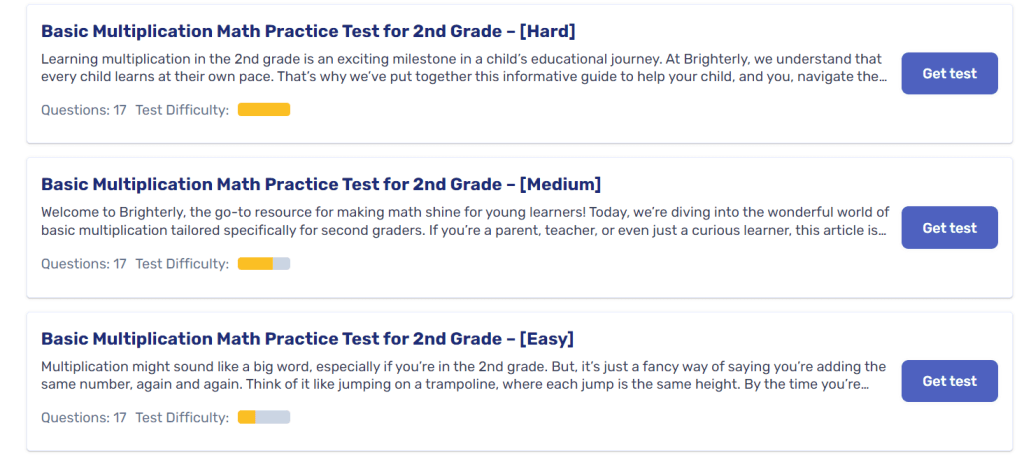
Brighterly Multiplication worksheets
There cannot be too much practice when things concern math. Brighterly team knows this and employs the best ways to teach multiplication with many-sided tasks. It’s where their worksheets come into play. There are so many worksheets that you’ll definitely find something to suit your taste and needs.
Intrigued? Check out these:
Introduce Fun Math Books
This one takes a special place among other easy ways to teach multiplication. After all, what can be better than colorful, abundant books to captivate kids and spark their interest? Most publications use animals and other visually appealing objects to grasp their attention.
But you should choose those books carefully. Pick only those your kid would like to open outside their classroom. Do they want you to buy the specific book while you’re in the store? Congrats, you already have some clues!
Otherwise, these are some brilliant options:
- The Best of Times: Math Strategies That Multiply by Greg Tang
- Math for Minecrafters: Adventures in Multiplication & Division by Amanda Brack
- One Grain of Rice: A Mathematical Folktale by Demi
Break The Times Table Into Smaller Chunks
Remember yourself trying to memorize that multiplication table. Even though it’s of much help, it also takes a lot of time to learn.
The only real advice here is to break it into smaller chunks. For example, you can first let them solve multiplication problems for numbers one to five. Alternatively, you can first teach them some simpler multiplications for numbers 1, 2, 5, and 10. Once they are well prepared, get down to the other numbers.
See? It’s not that difficult if completed step by step.
Recite The Multiplication Table
The easy way to teach multiplication to kids is to recite the multiplication table. Encourage them to repeat the table as they prepare for school. Plus, give them some tiny tasks as they complete their unusual activities. And don’t forget to reward them if they get the correct answer.
Conclusion
Even though multiplication can become a common stumbling point for many students, there are definitely certain ways to speed up the studying process. Break it into chunks, stay involved, and try to make the whole multiplication practice more engaging. And remember — the true value comes from what children can use in daily life, so make sure to show that real-world application.
Facing challenges with multiplication? No worries, tutors at Brighterly are always here to assist you. Book your lesson now and start learning!







